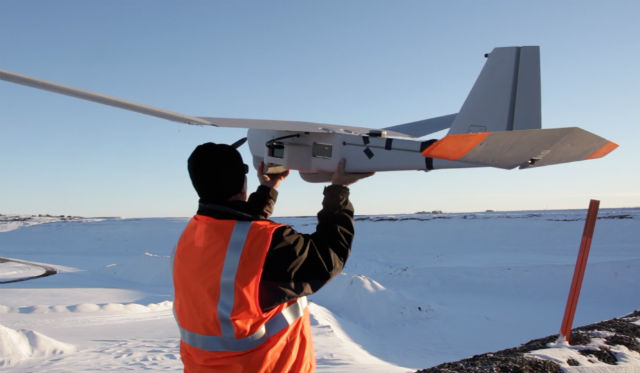The US Department of Transport has issued a scathing report on the Federal Aviation Administration’s efforts to integrate unmanned air systems into the national airspace (NAS), claiming the administration is behind on a number of targets that determine if it will meet its 2015 integration deadline.
An Office of Inspector General audit report claims the FAA is behind on a number of objectives, and there remains a lack of technology standards for UAS to be able to sense and avoid obstacles. Other issues are a lack of certification and air traffic management procedures, or sufficient training for these.
“Significant technological, regulatory and management barriers exist to safely integrate UAS into the NAS,” the report begins. “The FAA is not effectively collecting and analysing UAS safety data to identify risks.
“This is because the FAA has not developed procedures for ensuring that all UAS safety incidents are reported and tracked, or a process for sharing UAS safety data with the US Department of Defense – the largest user of UAS.”
Technologies required to integrate UAS into the NAS include a capable sense-and-avoid system to replicate what a pilot would see on board a manned aircraft, as well as a robust datalink – two systems the report claims are lagging in development.
The DoT published a similar criticism in February, when a report claimed the automatic dependent surveillance – broadcast (ADS-B) programme – “the core for shifting from today’s ground-based radar to NextGen’s satellite-based system” – is behind in development.
“Underlying programmatic and organisational challenges that we have previously reported continue to impact the FAA’s ability to deliver NextGen capabilities as originally planned,” the February report states.
The June paper adds that the FAA is not effectively managing its oversight of UAS operations. It claims that despite the establishment of the UAS Integration Office, the administration has not clarified lines of reporting or established clear guidance for regional inspectors on authorising and overseeing UAS operations.
“Until the FAA addresses these barriers, UAS integration will continue to move at a slow pace, and safety risks will remain,” the report adds.
The FAA released its Modernization and Reform Act in 2012, which mandated that UAS would be able to fly in the NAS by 30 September 2015.
A list of targets was produced by the administration in accordance with this aim, including the establishment of six UAS test sites – a goal achieved at the end of 2013, over a year behind schedule. The targets stated the integration of small UAS should be prioritised, with Arctic operations being the first application for these systems.
In June, the FAA issued the first certificate of waiver or authorisation for overland operations to BP and AeroVironment for surveillance of the former’s oilfield in Prudhoe Bay, Alaska, using the manufacturer's Puma AE UAS.

AeroVironment
“The FAA is making some progress in meeting UAS-related provisions of the FAA Modernization and Reform Act of 2012,” the paper notes. “[However,] the agency is significantly behind schedule in meeting most of them – including the goal of achieving safe integrationby September 2015”.
According to the report, the FAA has completed nine of the act’s 17 UAS provisions, including the selection of six test sites, publishing a UAS Roadmap and developing a comprehensive plan outlining the FAA’s UAS plans in the near- and long-term.“However, the agency missed the statutory milestones for most of these provisions, and much work remains to fully implement them,” the report says.
The FAA is also said to be behind schedule in implementing the remaining eight UAS provisions, including the August 2014 milestone for issuing a final rule on small UAS operations.
“The FAA’s delays are due to unresolved technological, regulatory and privacy issues, which will prevent the FAA from meeting Congress’ 30 September 2015 deadline for achieving safe UAS integration," the paper continues.“As a result, while it is certain that the FAA will accommodate UAS operations at limited locations, it is uncertain when and if full integration of UAS into the NAS will occur.”
According to the paper, the DoT is “making recommendations” to facilitate the effectiveness by which the FAA can safely integrate UAS into the NAS.
Source: Flight International


























